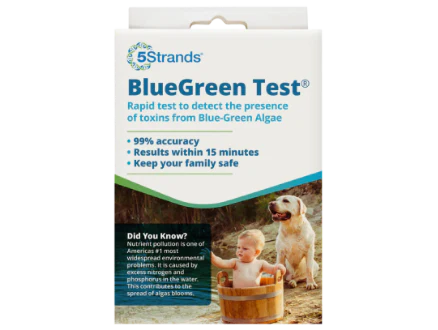Pets need to stay hydrated, but some water sources are safer than others. Learn how to spot and keep your furry friends away from dirty water.
Written by Kelsey Graham — Medically reviewed by Dr. Patricia Shanteau
Updated March 8, 2022
(original Article) https://betterpet.com/dangers-of-dirty-water-for-pets/
Avoiding dirty water for pets
Like humans, pets need to stay hydrated throughout the day for optimal health. Pets need clean water to help with digestion, flush out toxins, and hydrate and protect their bodies. Dirty water from sources like lakes, puddles, ponds, and streams can be quite dangerous for both dogs and cats. Just a few sips of water from a tainted source can lead your pet to develop a host of illnesses and infections. To keep your pet healthy, it’s essential to keep in mind that not all water is safe.
Safe water sources for pets
Pets need access to clean, fresh water to stay hydrated and healthy. When choosing water sources for your pet, it’s best to select one of the following options.
- Tap water (usually). Since it’s filtered, clean tap water from your faucet is generally a safe option to give your pets. But, some local water suppliers add additional chemicals and nutrients that may have an adverse effect on your pet. If you’re concerned your local water is making your pet sick, you can check with the EPA to download an annual water quality report for your area.
- Filtered or bottled water. If you have concerns about tap water, you might want to use bottled water instead. This also includes spring water, a popular source for bottled water suppliers. Filtered or bottled water manufacturers use different methods to clean their water, so read the label first to ensure the option you choose has been properly treated.
- Distilled water (usually). Distilled water is highly filtered water that’s free of contaminants and minerals. While it’s a reliably clean water source, it lacks additional minerals and nutrients often found in tap water. If this is the only source of water you give your pets, they may end up lacking vital nutrients in their diet.
- Fresh, clean rainwater. Pure rainwater is often safe for humans and pets to consume, within limits. You’ll need to be careful about how you collect your water and avoid collecting run-off water that may contain bacteria and other contaminants. Local air pollution levels can also affect the quality of your rainwater.
Unsafe water sources for pets
Dirty or unsafe water for pets is unfortunately quite common in many areas. Make sure to avoid letting your pets drink water from the unsafe sources mentioned below.
- Ponds, lakes, and streams. Just because water is fresh doesn’t mean it’s safe. Ponds, lakes, and streams pose the risk of containing harmful toxins and bacteria, like blue-green algae. If you’re concerned your dog ingested or swam in contaminated water, you’ll need to take your pet to a vet clinic immediately.

- Puddles. Puddles in cities and suburbs can contain antifreeze and motor oil, both of which are extremely toxic to dogs. Antifreeze (ethylene glycol) tastes sweet and can attract dogs. But, it can have devastating consequences if ingested. Puddle water can also contain urine from sick wild animals that, when ingested, can cause your pet to develop bacterial infections.
- The ocean. Ocean water may be fun for splashing, but it’s not safe for drinking. Saltwater ingestion is a common cause of vomiting and diarrhea in dogs. If your pet ingests too much saltwater, this may lead to saltwater poisoning, which can cause severe dehydration and potentially be fatal.
- Toilets. Toxic chemicals like bleach in household cleaners can linger in your toilet bowl, causing mouth ulcers or gastrointestinal tract issues for your pet. If you think your pet has ingested a toxic chemical, call the ASPCA Animal Poison Control hotline for next steps.
- Pools. Both saltwater- and chlorine-treated pools can cause vomiting and diarrhea in dogs. One of the best ways to prevent your pet from drinking pool water is by ensuring they have access to clean water at all times — especially when they’re outside.
- Communal water bowls. While communal water bowls are a gracious offering at dog parks and shops, they can be full of bacteria, parasites, and viruses. To avoid the risk, look into purchasing a pet water bottle to bring with you on the go.
- Snow. Like puddles, snow can contain harmful chemicals like antifreeze or excretions from other animals that can make your pet sick.
- Hose water. While hose water is a great way to cool off on a hot day, avoid using it to fill up your pet’s water bowl. Studies have found that garden hoses left out in the sun can contain harmful chemicals like lead and chlorine.
The dangers of dirty water
There are many hidden and microscopic dangers in dirty water. Some of the most common are listed below.
Leptospirosis:
Leptospirosis is a disease spread through the urine of infected animals that can seep into water sources like puddles and streams. It’s also a zoonotic disease, meaning a dog can pass it on to humans. Signs of infection include vomiting, fever, shivering, change in urination frequency, lethargy, and muscle tenderness.
For the best prognosis, leptospirosis requires early treatment by a vet. If left untreated, it can lead to liver and kidney diseases. Treatment often includes hospitalization with isolation, IV fluids, and antibiotics. You can also talk to your vet about a yearly leptospirosis vaccine for your dog if there’s an increased risk of exposure in your area.
Giardia:
Giardia is a single-celled parasite found in freshwater and moist soil. If your pet drinks water infected with giardia, the parasites will live in their intestines and cause diarrhea that can sometimes be bloody. Treatment often involves oral medication, such as a dewormer, and following good hygiene practices to properly remove cysts and prevent reinfection.
Coccidiosis:
Coccidiosis is an intestinal tract infection that can be transmitted by ingesting feces from an infected animal. Common ways pets contract this infection is by consuming contaminated soil or water that’s come into direct contact with infected feces. Visible symptoms in adult dogs usually only include diarrhea, but puppies or adult dogs with other ailments may show signs of dehydration, abdominal distress, and vomiting. Your vet will need to perform a fecal float test to diagnose an infection as these intestinal worms are unlikely to be visible to the human eye.
Blue-green algae:
Blue-green algae is a type of bacteria that can overgrow in warm, stagnant water, like lakes, ponds, and streams. Blue-green algae tend to be most common during the warm summer months. Ingesting water contaminated with this toxin is hazardous for humans and pets and can cause serious illness. The most common symptoms of your pet ingesting contaminated water include vomiting, diarrhea, weakness, and collapse. Avoid letting your pet swim in water with a green hue or a bluish-green scum on the surface.
How to keep your pet from drinking dirty water
Though unsafe drinking water is commonly found at parks or on walks, this doesn’t mean you need to forgo any new adventures. Whether at home or outdoors, there are a few simple ways pet owners can help prevent their furry friends from drinking dangerous, dirty water.
In the home:
Refresh your pet’s water often — Make sure to refill your pet’s water bowl at least once a day. Cats prefer fresh water, so you may need to replenish their bowls multiple times a day to keep them hydrated.
Use a pet water fountain — Pet water fountains are a great way to keep your furry friend’s water filtered and fresh.
Keep toilet lids closed — Make a habit of closing toilet lids to limit your pet’s desire to use your toilet as a drinking bowl.

Outside:
Invest in a dog water bottle — Purchase a dog water bottle to bring with you on any adventure or road trip, so your furry friend always has a source of clean drinking water.
Research waterborne risks and illnesses in your area — Stay on top of water quality in your area and avoid contaminated bodies of water.
Keep them in eyesight — Pets are curious creatures. One preventative measure you can take to keep your pup from drinking dirty water is to keep them on a leash on walks or hikes.
Dogs are susceptible to harmful algae because they swallow more water while swimming and doing activities (such as retrieving a ball from the water). Animals can experience symptoms within minutes of exposure to the toxins. Symptoms include vomiting, diarrhea, weakness, difficulty breathing, and seizures. In the worst cases, animals have died. If your pet experiences these symptoms after exposure to algae, contact your veterinarian.
TEST THE WATERS - Before you allow your pet in the water or to drink the water.

5Strands has brought the only on-site testing kit to market. The BLUEGREEN TEST® is the world's first rapid diagnostic test to detect a broad range of hepatotoxins on-site. It utilizes a single step, sandwich type, non-competitive immunocomplex assay method, using combinations of antibodies detecting molecular structures present in all common microcystins and nodularins. This combination enables the test to detect eleven commonly occurring hepatotoxins in a single test and can detect levels below 0.1 µg/L. and takes just 15 minutes to process with immediate, sensitive and indicative results.



























